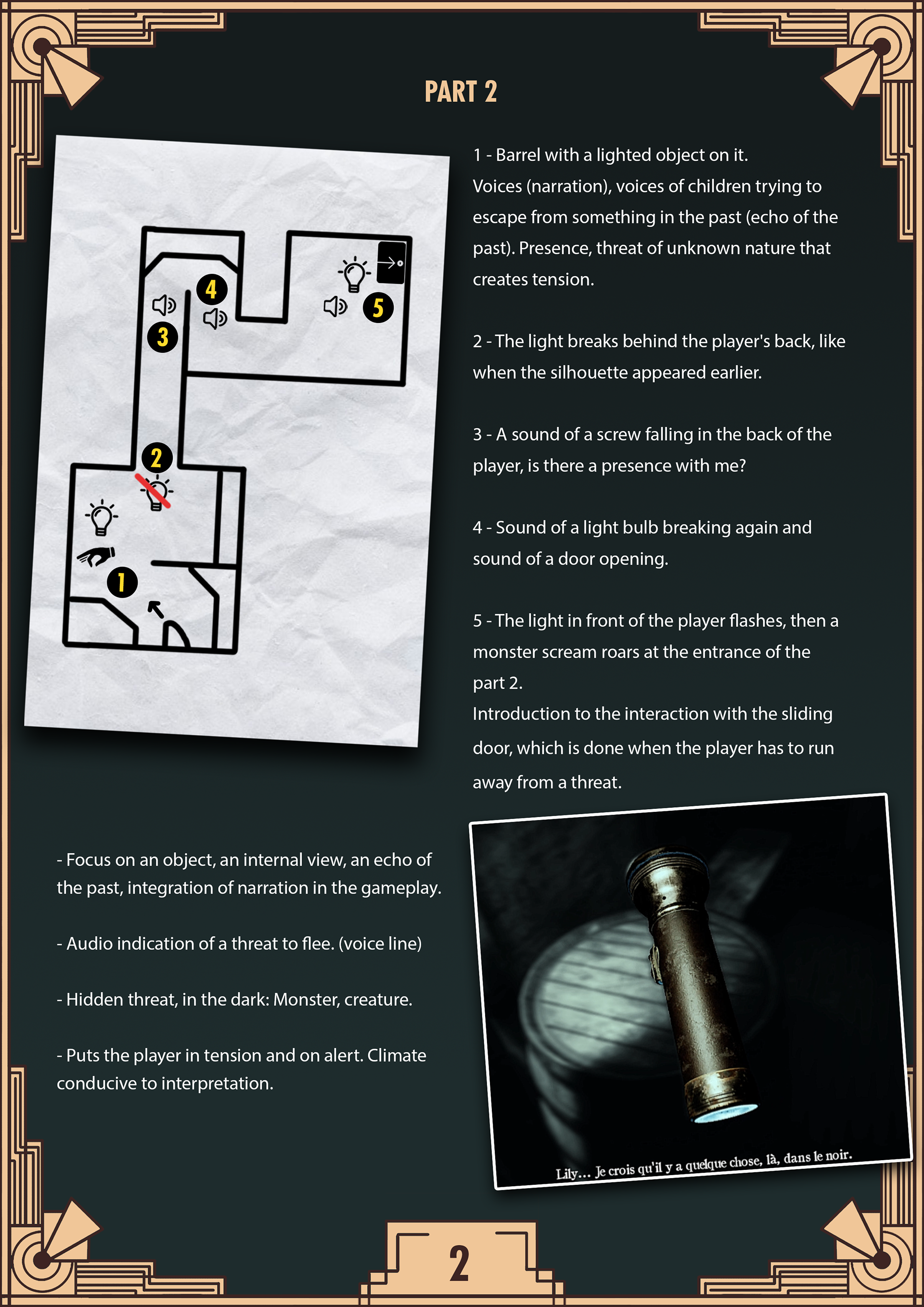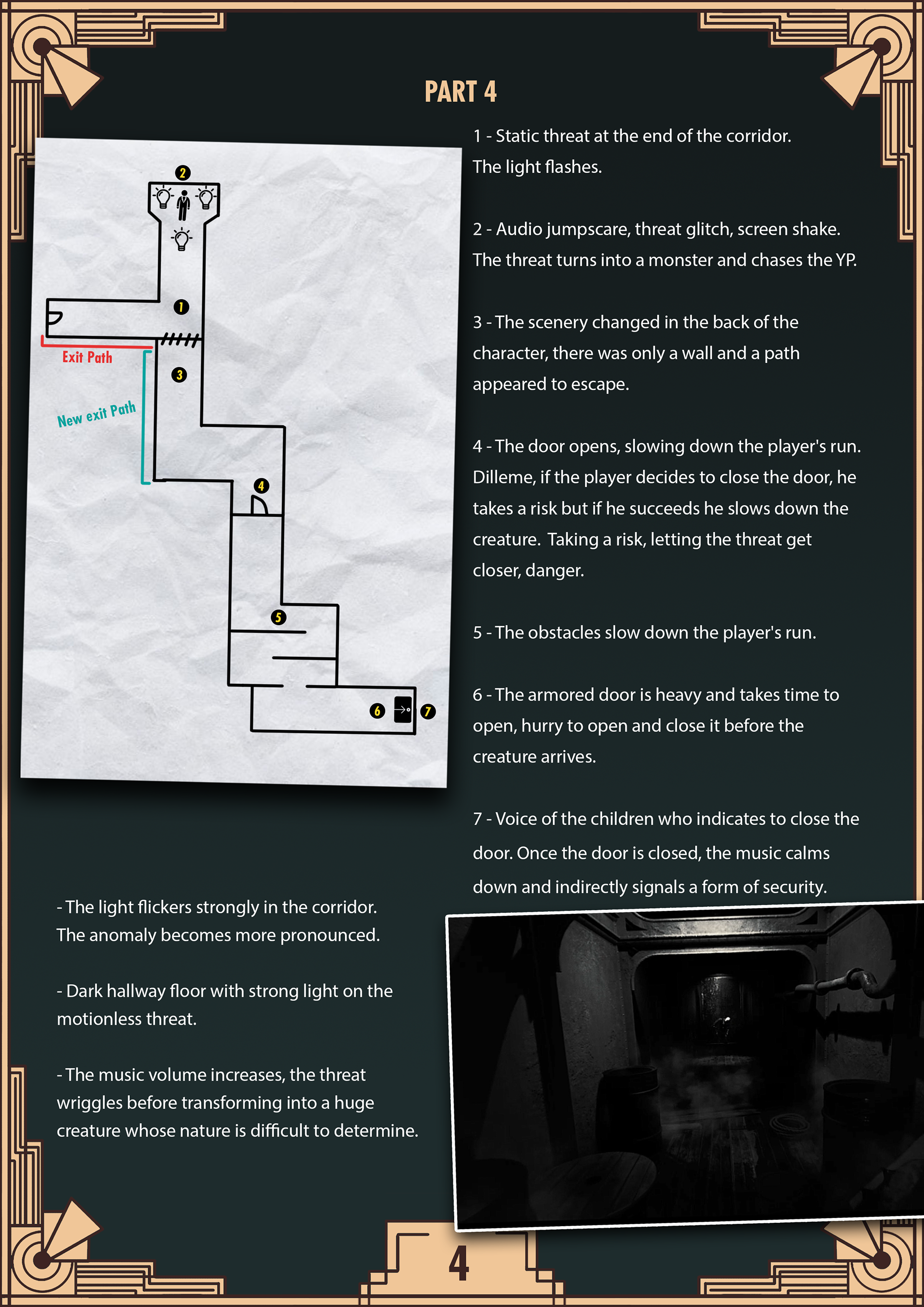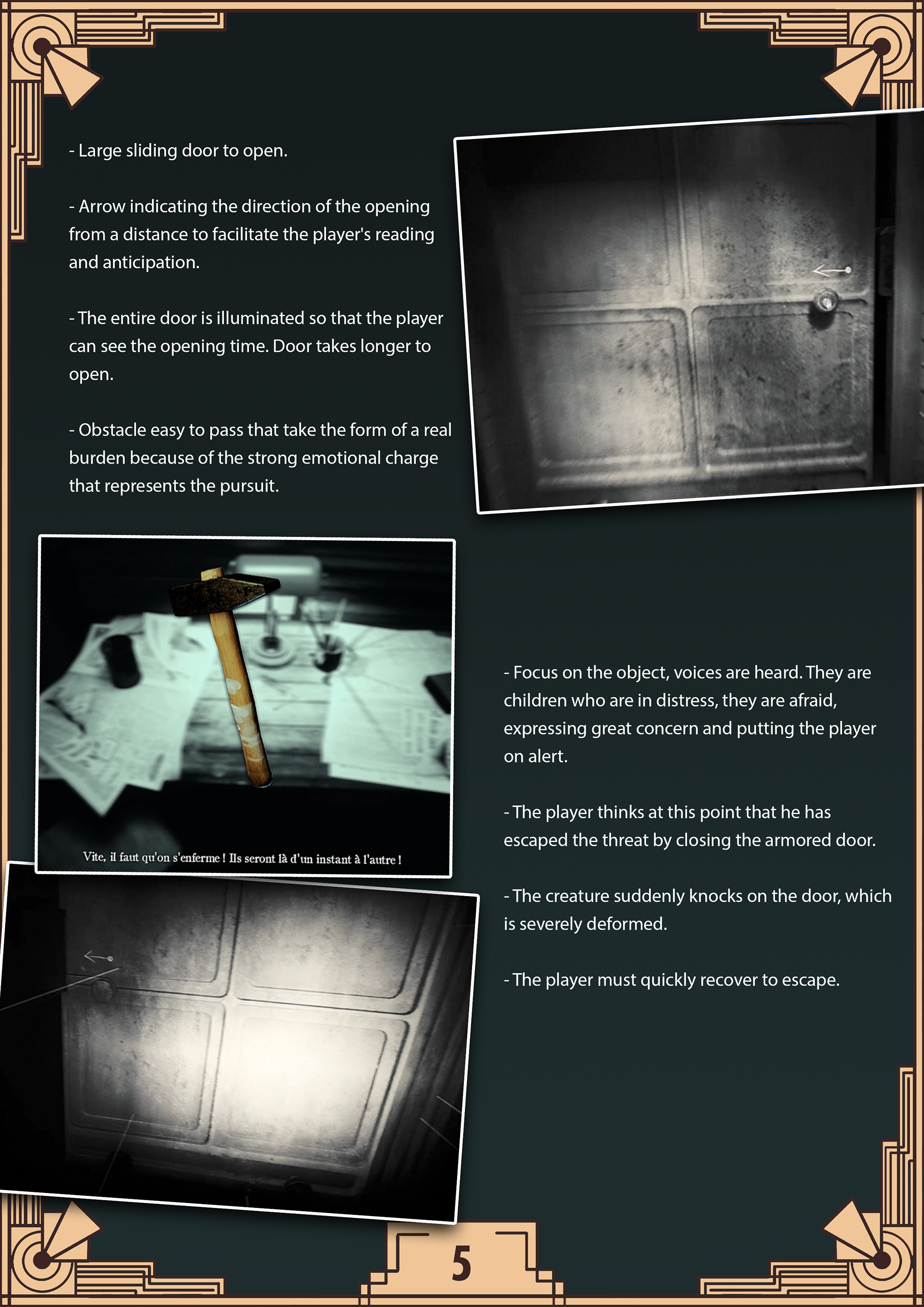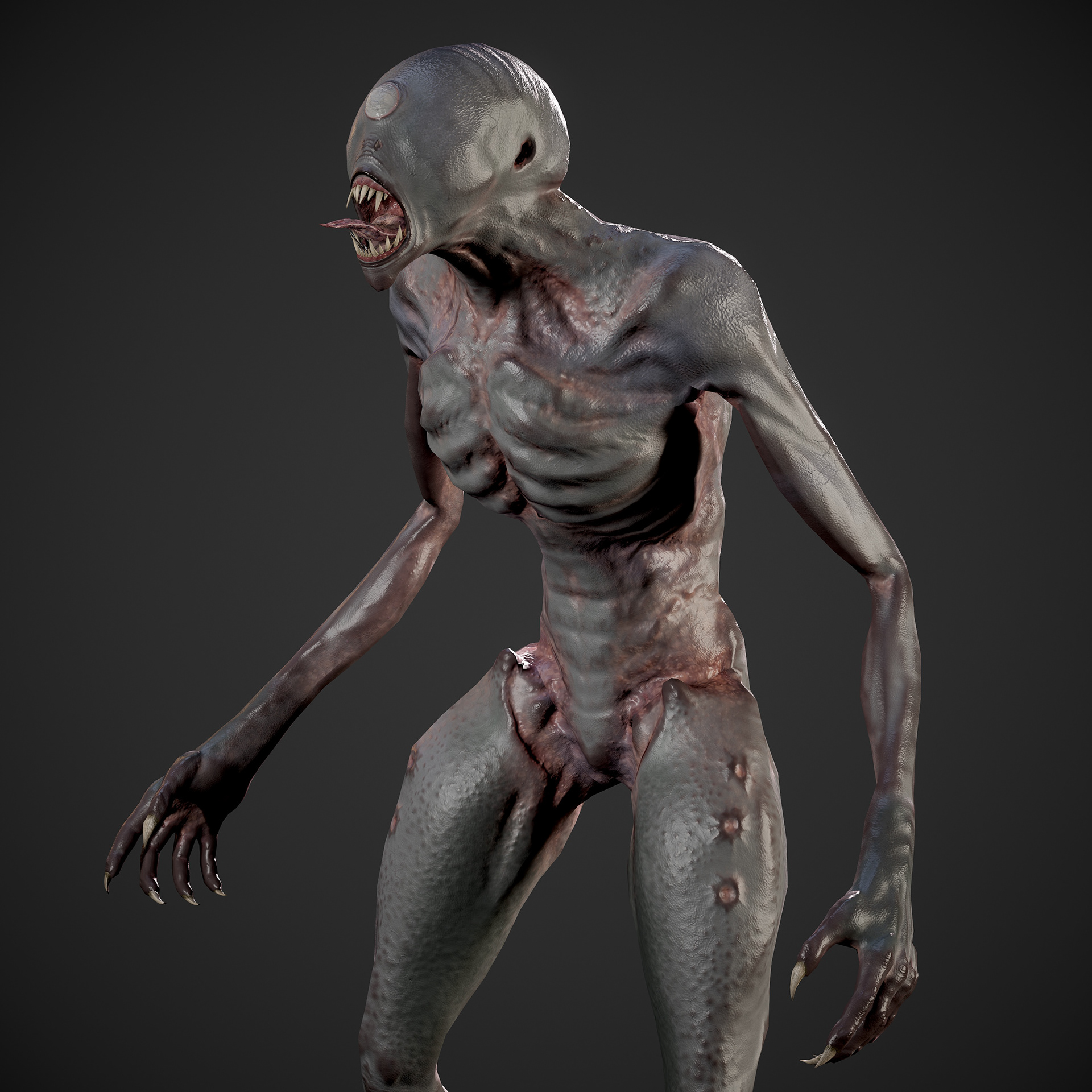PROJECT DETAILS:
Solo Personal Project
Genre : Survival Horror
Engine : Unity 3D
Platform : PC
Duration : 2 Months in half time
Purpose : Make a Game Concept and its proof for a game I would like to develop in the future.
Roles : Level Designer, Experience Designer, Game Designer, Programmer.
WHAT I'VE DONE:
- Design and writing a game concept based on a pattern intention.
- Analyze a narrative game experience and attractions of theme parks with
a narrative aspect and confronting them to emerge a design structure.
- Create a flowchart of the game experience.
- Design levels (Top-Down Layout) in accordance with the design structure
emerge from analyzes.
- Integration of levels in engine and level art.
- Code events and AI patterns.
- Implement spatialize sound with Wwise.
THE GAME:
The Lost Frequency is a Survival Horror game in which you play Aron, a scientist studying climate variations. Following an accident due to a weather phenomenon, you wake up in an old hotel in the style of the 50s. Cut off from the outside world, you manage to keep in touch with your colleague Terrens, who was also present during the accident. The events that are happening in this place are strange to say the least, and what is certain is that you are not the only one wandering the dark corridors of this hotel.
THE GAMEPLAY:
The gameplay is based around a main mechanism, the use of frequency modifiers, a tool that Aron recovers at the beginning of the adventure and that will be your best tool to survive. It allows both to find and repair the frequency transmitters at the origin of the strange phenomena that occur in the hotel. A monstrous creature, the Trepan Eater will only hunt you down to make you fail in your quest to restore reality. She intends to lobotomize you, like all those who preceded you.
3D Model of Frequency Modifier






MY WORK:
This project was an opportunity for me to work on a concept on a kind of game that I particularly like: the Survival Horror. Through The Lost Frequency, I wanted to give players a memorable experience, inspired by my own gaming experiences, where you can immerse yourself cognitively and emotionally.
In order to better understand the keys that make them memorable and immersive, I have made the choice to analyze my own gaming experiences before even proposing a concept.
The processes used extend to other areas such as attractions parks. The way of constructing the experiences and the progression of people in the attraction are similar in many points. That’s why I also analyzed the experience pacing of Phantom Manor and The Hollywood Tower Hotel attractions at Disneyland Paris.
Level Progression of Phantom Manor
TOPICS AND THEMES:
I wanted to develop a topic that would be horrible because it is or was real. While researching, I came across lobotomy and its application in the 1950s. I found it frightening to imagine such barbaric medical practices, the subject seemed interesting to me to exploit, especially since the fear of medical intervention is an area that still scares today. I wanted to mix it with a topical subject, alienation to screens and electronics that I mechanically exploited through radio wave manipulation.
LEVEL DESIGN AND GAME EXPERIENCE:
Aron comes to his senses in an old library. This room allows the player to retrieve the frequency modifier and set up the mood as well as the storytelling in order to directly involve the player in the game's story. The player discovers the character he plays and what he confronts. We only reveal to him the general problem he faces: Find himself trapped in an environment cut off from the world of which he knows nothing.
TOP VIEW OF THE LIBRARY


The lever on which it was interesting to work was the suggestion of danger. The beginning of the experiment required a learning phase, including the introduction of a threat. In this demo, it is through sound design, work on lights, as well as the environmental storytelling that I tried to make feel apprehensive and insecure.
The atmosphere becomes darker a little more by plunging the player in a full darkness. Only the light emitted by the television gives him a little visibility. As he approaches it, he finds himself teleported into the dark room.
This space allows to onboard the frequency modifier, understand fault detection, frequency repair and become aware that a threat is present.
This part ends with the appearance of a new television set that allows the player to return to the library.
Back in the library, the lights are back on and the room now has an exit door. The frequency changes on the anomalous transmitters have had a positive effect. Thus, a more concrete goal presents itself to the player: Repair the frequencies of the anomalous transmitters.
As he repairs the frequencies, changes occur in the environment, both insignificant and disproportionate. These repairs also cause paranormal events to occur.
Light and sound play an essential role in the game experience: Never explicitly stating where to go, or what to do, signage and feedback help guide progress and promote understanding of an action on the surrounding environment.
After being suggested, then quickly seen at the end of a corridor. The player will again be confronted with the Trepan Eater in a chase phase.
For the start of the chase, I have adapted the pattern used in the first chase in Layers of Fear 2.
The player manages to end the chase by sneaking into a duct. His rest will be short-lived because he will soon be confronted with the Trepan Eater again in the final phase.
In this phase, the player must repair the frequencies of several anomaly transmitters without being caught by the Trepan Eater. The positions of the transmitters are unknown to him and he must use his frequency modifier to do this.



